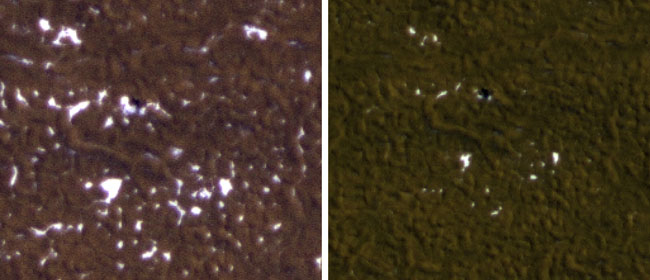Long-Silent Mars Lander Appears to Be Officially Lost

It looks like it really is the end for NASA's Phoenix MarsLander, which spent five months digging in the Martian arctic before succumbingto the icy winter conditions that set in at the end of its mission.
The third and final attempt to listen for any signs ofsurvival from the lander, conducted last week, didn't turn up a peep.
Phoenix landedon Mars on May 25, 2008, and operated successfully in the Martian arcticfor about two months longer than its planned three-month mission, whichconfirmed the presence of water ice under the Martian surface. But once the sunand temperatures dropped and winter set in, the spacecraft didn't have enoughpower to keep going. The lander went silent in November 2008.
Phoenix was notdesigned to withstand the extremely low temperatures and the ice load ofthe Martian arctic winter. But in the unlikely event that the lander'scomponents survived and the spacecraft received enough energy from the risingspring sun, mission managers planned on listening for any signals that Phoenixwas waking itself up.
Two attempts at listening were conducted by NASA's MarsOdyssey Orbiter in January and February, neither of which turned up anysignals.
The listening flyovers conducted last week were the thirdand final attempts planned by NASA. These orbits also turned up no signals fromthe lander, which seems to be gone for good.
"In the unlikely event that Phoenix had survived theharsh Martian arctic winter and been able to achieve a power-positive statewith the return of continuous sunshine, there is a very high likelihood thatone or more of these 60 overflights would have overlapped with a transmissionattempt by the lander," said Chad Edwards, chief telecommunicationsengineer for the Mars Exploration Program at NASA's Jet Propulsion Laboratory,Pasadena, Calif.
Breaking space news, the latest updates on rocket launches, skywatching events and more!
"This was the last of our three planned Phoenix searchcampaigns. The Mars program will evaluate the results in hand to assess whetherfurther action is warranted," Edwards said.
- Mars Is a Spacecraft Graveyard
- Images:Phoenix on Mars
- SpecialReport: Highlights of the Phoenix Mars Lander Mission

Andrea Thompson is an associate editor at Scientific American, where she covers sustainability, energy and the environment. Prior to that, she was a senior writer covering climate science at Climate Central and a reporter and editor at Live Science, where she primarily covered Earth science and the environment. She holds a graduate degree in science health and environmental reporting from New York University, as well as a bachelor of science and and masters of science in atmospheric chemistry from the Georgia Institute of Technology.
